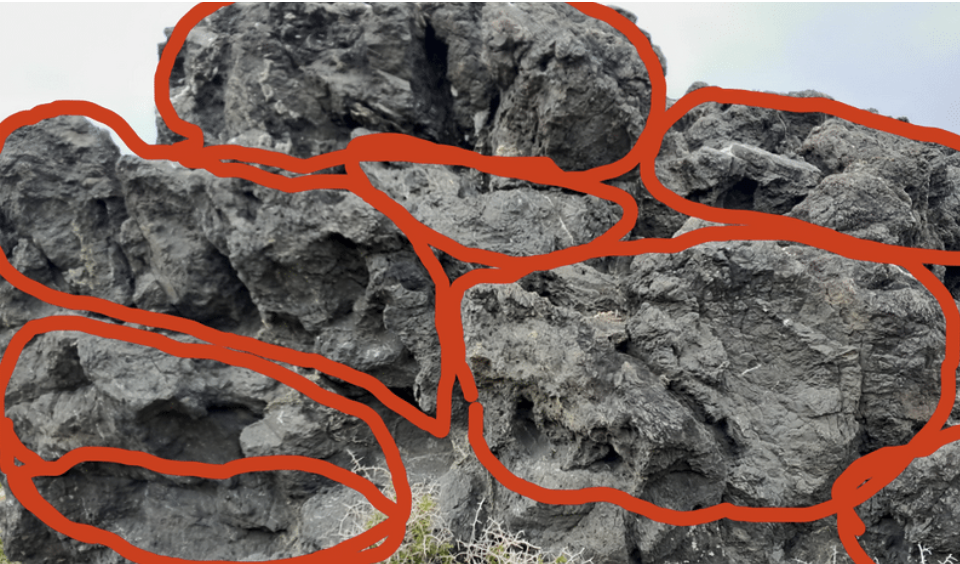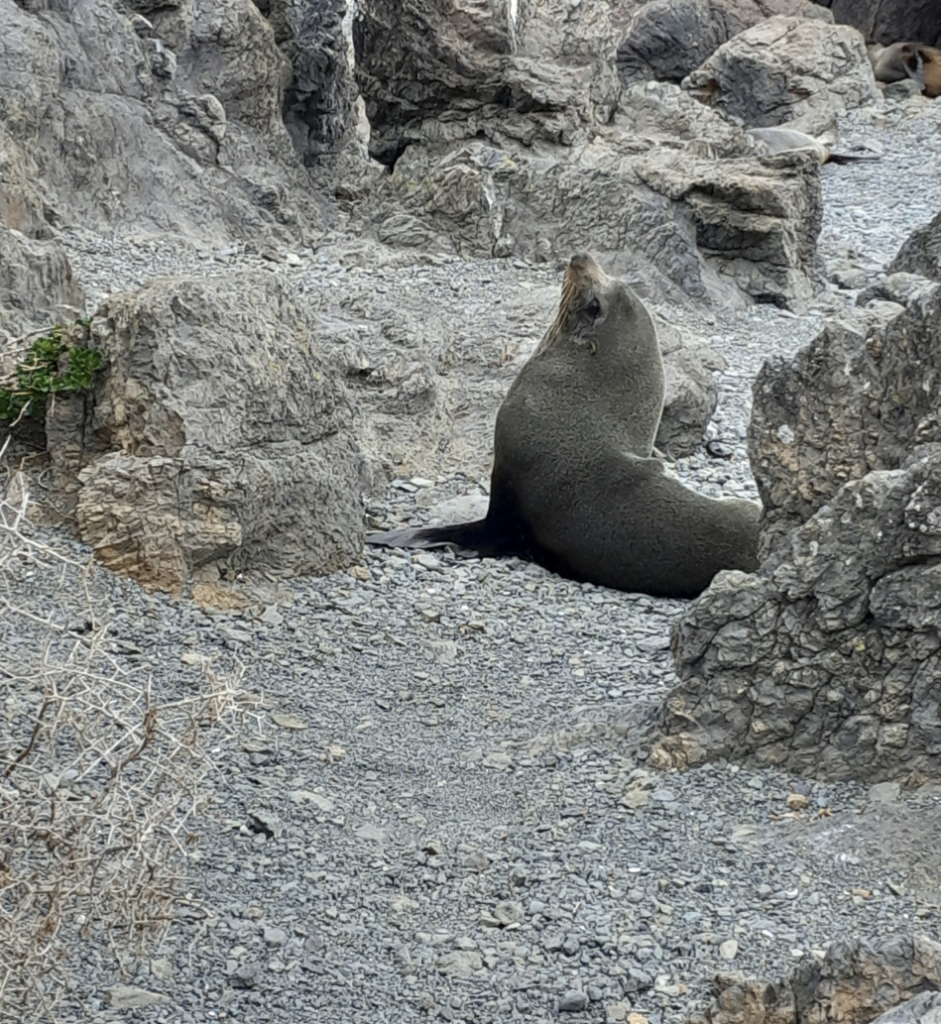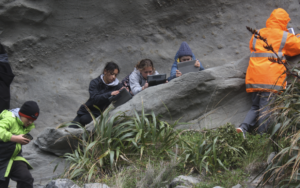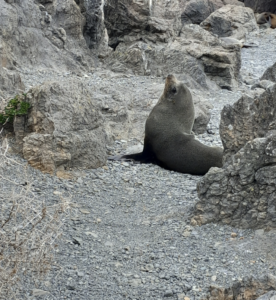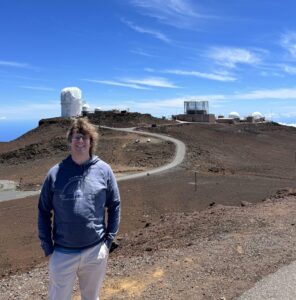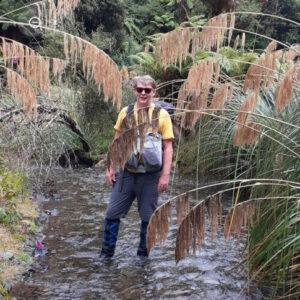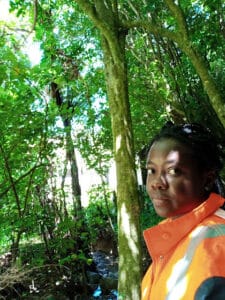Kupe
Kupe’s Sail Rock is one of the most visually spectacular references to Kupe, but there are many others throughout the Wairarapa and the rest of New Zealand.
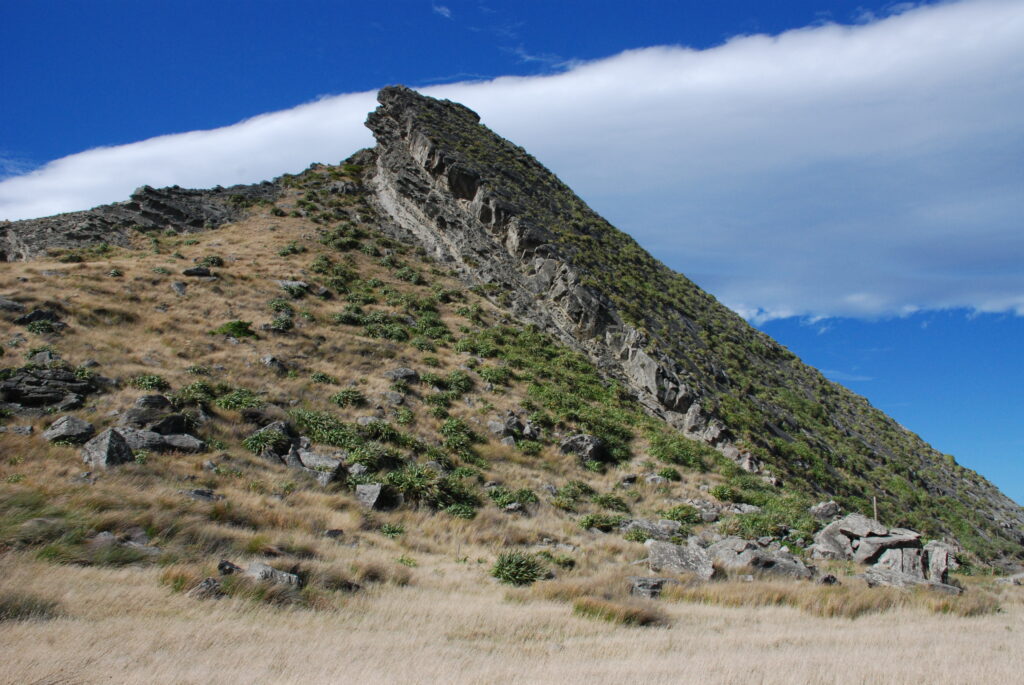
One account of Kupe’s Sail Rock is that he and his friend Ngake competed to see who could complete a canoe sail/ra the fastest. Find out more at: https://teara.govt.nz/en/1966/kupes-sail
You can read more about the STEM associated with Kupe’s Sail Rock here.
At Matakitaki-a-kupe Reserve there are other references to Kupe including Kupe’s Spy Hole (photo below)
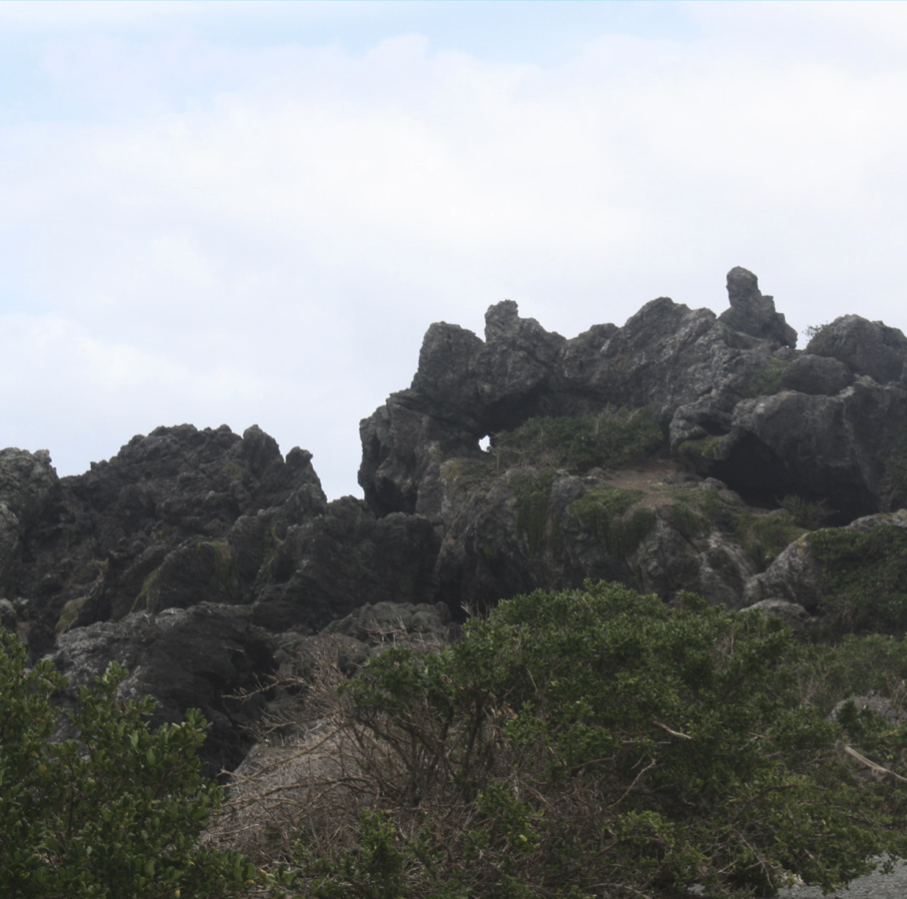
Here you can see pillow lava formations that were erupted under an ancient ocean.
In the centre of the photo is a small ‘spy hole’ from which Wellington can be seen. One account tells of Kupe watching his daughters leave the Wairarapa and head to Wellington. In despair, Kupe cuts himself on the jagged basalts – bleeds and extrudes green snot from his bleeding nostrils onto the rocks below.
A related pūrākau tells of Kupe following his daughters to Wellington and cutting his hand at Red Rocks/ Pariwhero. Other versions say that Kupe stayed within the Wairarapa.
Red and Green Rocks
These are sedimentary rocks such as chert (red, brown and green) and some whitish carbonate fragments. The chert is made up of very small radiolarian fossils. These tiny unicellular creatures left behind their silica skeletons which are not visible to the naked eye.
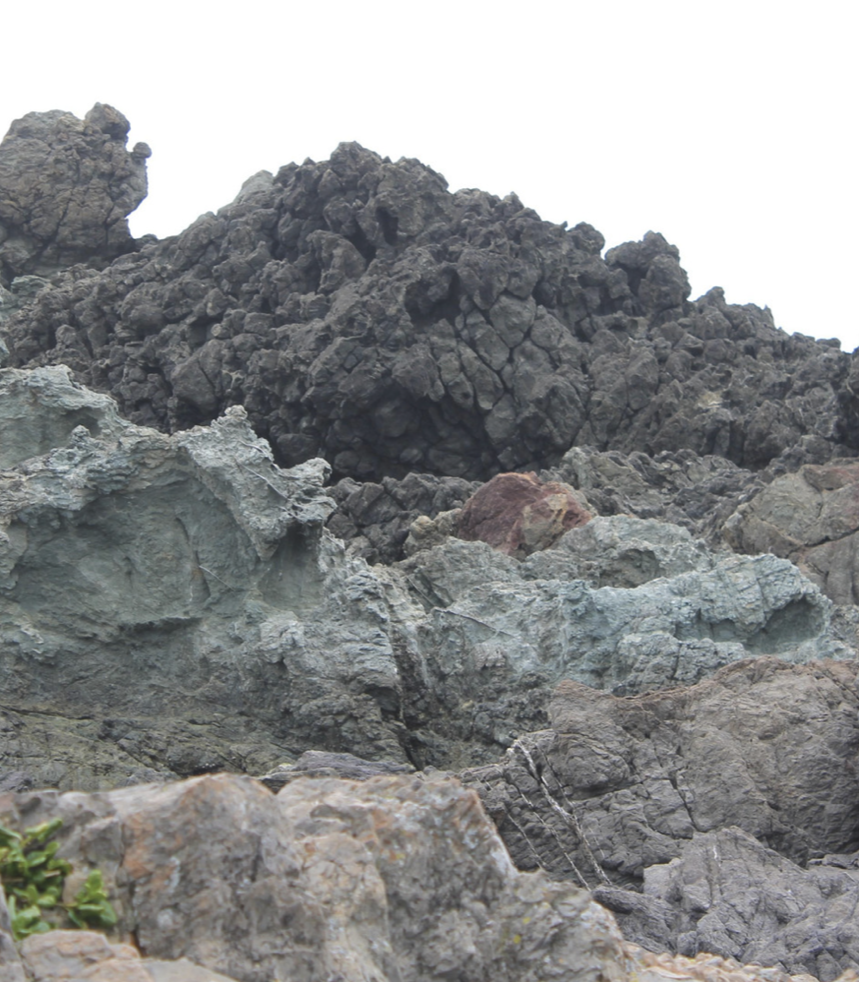
Because they evolved rapidly over time into different species, they are very useful to scientists for helping to find the age of the rocks.
The red and green rocks were formed on a sea floor with abundant oxygen and iron (red rocks) or limited oxygen (green rocks).
The abundance or scarcity of oxygen is related to the amount and type of biological activity occurring on the sea floor at the time of formation of the sediment.
Pillow Lavas
Stacks made from ‘pillows’ of basalt lava extruded onto an ancient sea floor (over 100 million years ago). Pillow lavas that most likely poured out from fractures onto the seafloor to form elongate lobes.
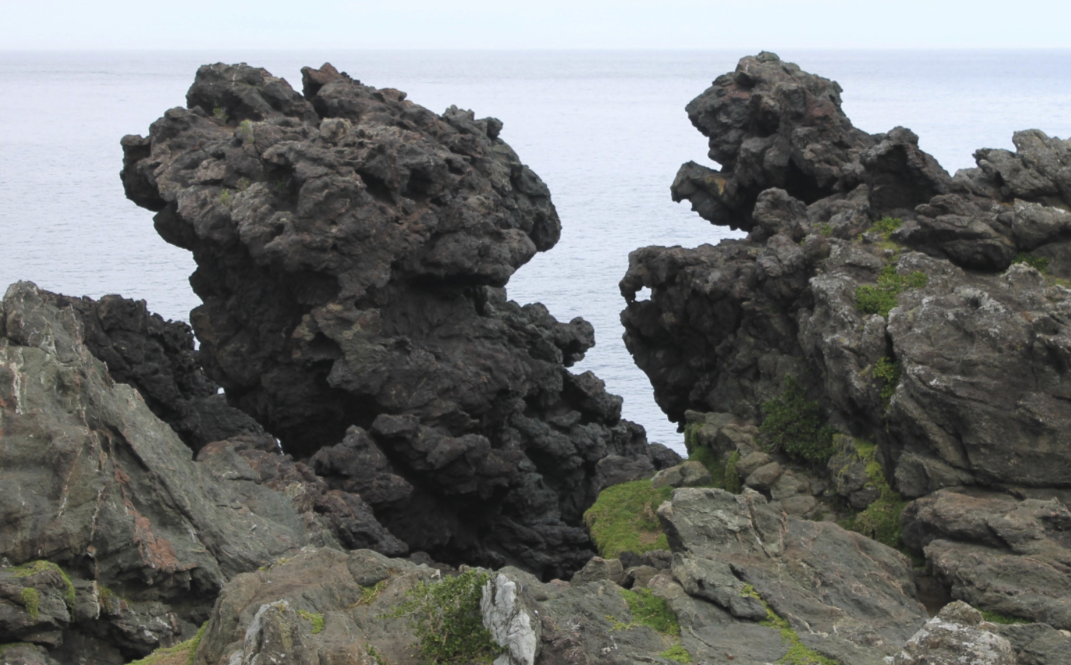
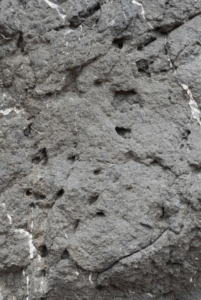
These basaltic rocks are hard and resilient which is why the outcrop stands out along this coast.
Up close you can sometimes see holes which were formed when gas escaped from the molton lava. These holes are called vesicles.
The pillows revealed
